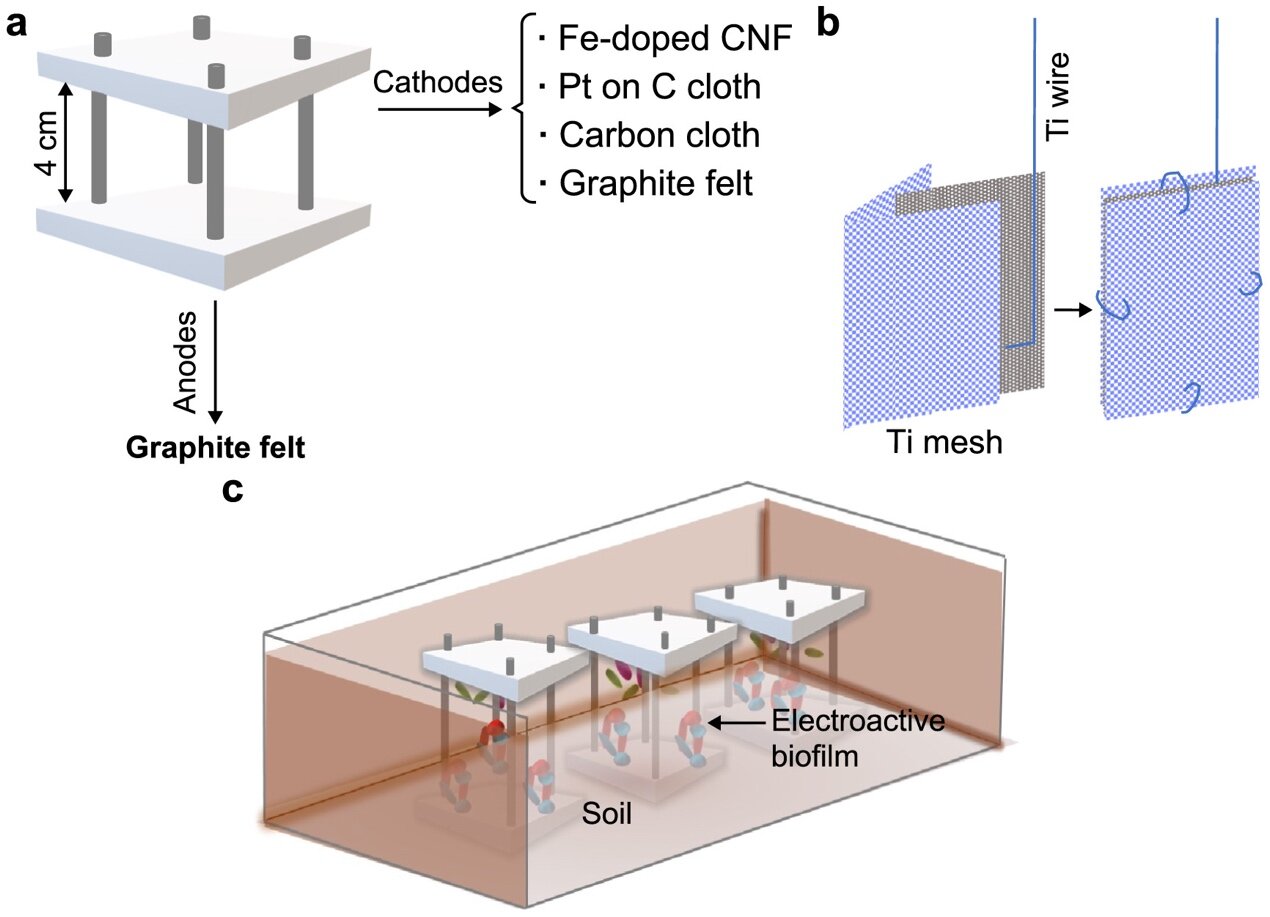As the demand for energy continues to rise, renewable energy solutions are necessary to achieve net-zero emissions by 2050. One such solution is microbial electrochemical technology, which uses microorganisms to convert organic matter into electricity. This technology is both cost-effective and environmentally friendly, making it an attractive option for green energy systems.
Cathode materials play a crucial role in the performance of microbial fuel cells, and researchers recently conducted a study to compare the performance of membrane-free air-cathode microbial fuel cells (SMFCs) using four different cathodes: carbon cloth, Pt-doped carbon cloth, graphite felt, and an innovative Fe-doped carbon nanofibers electrode.
Study Findings
The study, conducted by researchers from the University of Bath and published in the journal Environmental Science and Ecotechnology, found that Fe-doped carbon nanofibers and Pt-doped carbon cloth cathodes yielded stable performances, with peak power densities of 25.5 and 30.4 mW m−2, respectively. Graphite felt cathodes demonstrated the best electrochemical performance, with a peak power density of 87.3 mW m−2, but also exhibited the greatest instability.
An examination of microbial communities found differences between anodic and cathodic communities. Anodes were predominantly enriched with Geobacter and Pseudomonas species, while cathodic communities were dominated by hydrogen-producing and hydrogenotrophic bacteria, suggesting that hydrogen cycling could be a possible electron transfer mechanism.
The presence of nitrate-reducing bacteria in combination with cyclic voltammogram results indicated that microbial nitrate reduction occurred on graphite felt cathodes. The use of innovative Fe-doped carbon nanofiber cathodes provided an electrochemical performance comparable to Pt-doped carbon cloth, offering a low-cost alternative. However, graphite felt outperformed all other electrodes tested but displayed lower reproducibility and higher mass transport losses.
Conclusion
This study can guide future research on low-cost, high-performing SMFCs for practical applications in energy harvesting and bioremediation. By understanding how electrode materials influence microbial communities and electrochemical performance, researchers can accelerate the translation of SMFCs into real-world implementations. SMFCs offer a sustainable energy source and a self-powered in situ bioremediation strategy for contaminated soils, making them a promising renewable energy solution in the context of increasing energy demands and environmental concerns.



Leave a Reply